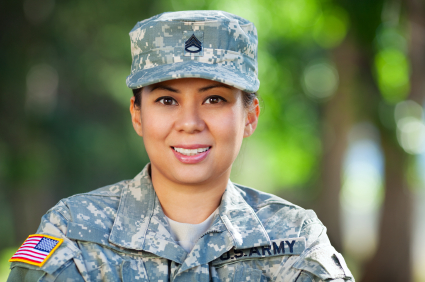
Rule restricting women’s role in direct combat will be formally lifted.
“They serve, they’re wounded, and they die right next to each other,” Secretary of Defense Leon E. Panetta noted yesterday of men and women serving in the U.S. military. He spoke these words in a public announcement made with the Chairman of the Joint Chiefs of Staff, General Martin Dempsey, that the Department of Defense would rescind a 1994 rule which limited the positions women service members could hold to non-direct combat roles. “The time has come to recognize … reality,” Panetta stated, noting that 152 women have died serving their country in Iraq and Afghanistan.
The 1994 Direct Ground Combat Definition and Exclusion Rule was immediately rescinded when the Secretary and General Dempsey signed a memorandum to that effect at the press briefing where they announced the policy change which lifts the outright ban on women serving in direct combat positions.
Although then-Secretary of Defense Les Aspin noted that the 1994 Rule expanded the roles available to women in the military, it specifically limited them from serving in “units below the brigade level whose primary mission is to engage in direct combat on the ground.” The 1994 Rule also noted that individual services could further limit the assignment of women for, among other things, reasons of privacy and physical demands of birthing, co-location, and long-range reconnaissance.
During yesterday’s announcement, Secretary Panetta noted that the Department and separate services have been examining how to expand further the opportunities available to women in the military for more than a year. In February 2012, the 1994 Rule was modified to eliminate the co-location limitation and open up other specific positions to women, resulting in 14,000 additional potential positions for female service members.
At the press briefing, General Dempsey referred to a letter that the Joint Chiefs of Staff had submitted on January 9, 2013, to the Secretary of Defense, officially asking the Department to rescind the 1994 Rule and lift the ban on women in combat. In the letter, the Joint Chiefs highlighted that “the time has come . . . to eliminate all unnecessary gender-based barriers to service,” and he set forth a broad implementation plan for lifting the ban.
General Dempsey also noted further effects of the rule change during the briefing. Prior to the total rescission of the 1994 Rule, military leaders asked why women should serve in particular specialties. Now, he noted, the question will be: “Why shouldn’t women serve in a particular specialty?”
Although certain units or forces may still be able to exclude women based on necessity, that will no longer be the default rule. The rule change shifts the burden to services to establish why women must be categorically excluded from certain positions, instead of presuming it to be true for all direct ground combat positions.
Secretary Panetta’s memorandum directing services to implement the rule change notes, “any recommendation to keep an occupational specialty or unit closed to women must be personally approved first by the Chairman of the Joint Chiefs of Staff, and then by the Secretary of Defense.” That approval authority cannot be delegated to lower officials.
Secretary Panetta and General Dempsey elaborated that qualification standards would be gender-neutral—standards and requirements for units will be the same for women and men. This means that in the future, direct combat units with strict requirements may have few or even no women that qualify to join them, even after full implementation of the rule change. The point, Panetta stated, is that “everyone is entitled to a chance.
The Secretary has directed each of the military departments to submit their plans for implementation of the directive by May 15, 2013, and he stated that implementation must be completed by January 1, 2016.



